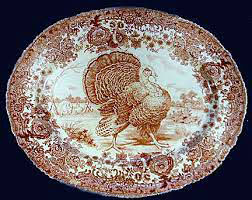QUESTION: My aunt had a large collection of Fiesta dinnerware which she left to me. I added a few pieces that I found at flea markets over the last few years, but now I want to sell it. Is this pottery worth much and where would be the best place to sell it?
ANSWER: Depending on what pieces you have, your collection of Fiesta dinnerware could be worth a small fortune. But before you get dollar signs in your eyes, there are a few things you should know about it.
The style and bright colors of Fiesta dinnerware look very 1950s. But actually it appeared during the Great Depression in the mid-1930s. Englishman, Frederick Hurten Rhead, designed the simple Art Deco shapes while chief engineer Victor Albert Bleininger fabricated the colorful signature glazes. Both worked for the Homer Laughlin China Company of Newell, West Virginia.
Originally, the company offered 37 different affordable pieces, ranging from candle holders and ashtrays to large serving dishes, each in five bright colors: red-orange, yellow, green, cobalt blue, and ivory. It added turquoise in 1939 for a total of six basic colors..
Homer Laughlin pioneered a whole new concept in dinnerware with Fiesta. When it first introduced the dinnerware at the annual Pottery and Glass Exhibit held in Pittsburgh, Pennsylvania in January 1936, its line was the first widely mass-marketed, solid-color dinnerware in the country. It was also the first dinnerware that consumers could purchase by the piece instead of in complete sets, as was the custom at the time. This allowed customers to mix and match, perhaps choosing a different color for each place setting, or have all their dinner plates one color, their cups and saucers another, and so on. This concept became instantly popular with the public, and soon Fiesta dinnerware became a runaway hit.

At its introduction, Fiesta dinnerware consisted of the usual place settings of dinner plates, salad plates, soup bowls, and cups and saucers, plus occasional pieces such as candle holders in two designs, a bud vase, and an ash tray. A set of seven nested mixing bowls ranged in size from five to twelve inches in diameter. The company also sold basic place settings for four, six and eight persons. But the idea from the start was to create a line of open-stock items from which the consumer could pick and choose based on their personal preference.
The Homer Laughlin Company quickly added several additional items to their line and eliminated several unusual items—a divided 12-inch plate, a turquoise covered onion soup bowl, and the covers for its set of mixing bowls. The Fiesta line eventually consisted of 64 different items, including flower vases in three sizes, water tumblers, carafes, teapots in two sizes, five-part relish trays, and large plates in 13- and 15-inch diameters.
But with the onset of World War II, the company was forced to reduce the number of items in the Fiesta line as public demand declined and companies cut back non-war related production. By the end of the war, Homer Laughlin had reduced the items in its Fiesta line by one third.
The design of the original dinnerware pieces remained unchanged from 1936 to 1969. However, the company did change its colored glazes to keep up with home decorating color trends. It introduced four new colors—rose, gray, dark green, and chartreuse, replacing the original blue, green, and ivory. Yellow and turquoise continued in production.
By the end of the 1950s, sales again dropped, so the company reduced its offering of items and changed the glaze colors once again. This time, it introduced a medium green, to distinguish it from other green glazes which the company had produced. This shade of green is in high demand by collectors, and certain pieces in this color command extremely high prices.
Homer Laughlin removed the original red-orange color, the most expensive glaze to produce, before 1944 because it contained uranium oxide which the government needed to construct the atom bombs. Therefore, red pieces also usually command a premium price in today’s collectible market.
By 1969, the company restyled the finials on covers, handles on cups, bowl contours and shapes to give them a more contemporary style.
Fiesta dinnerware became popular once again as baby boomers began establishing their own homes. Not long after Homer Laughlin discontinued the brightly colored dinnerware line in January 1973, collectors began buying up what remained at garage sales and second-hand shops. Prices for it hit the roof and by the mid-1980s, prices of Fiesta items reached $100 for scarcer pieces.
Generally, serving pieces such as casserole dishes, carafes, teapots, and water pitchers almost always have higher values than normal place setting pieces. As mentioned earlier, certain colors are also priced higher, no matter what the piece.
It’s also important to look on the back of each piece for the familiar “Fiesta” backstamp,
followed by 'HLC USA', 'MADE IN USA' or 'H.L. CO. USA.' You may also discover some pieces with the word 'GENUINE' stamped near the Fiesta signature.
As far as selling your collection, you might do better selling off the pieces individually. If the pieces are from the 1930s and 1940s, you might want to consider sending them to a good auction house where you'll most likely get a better return on them.







































